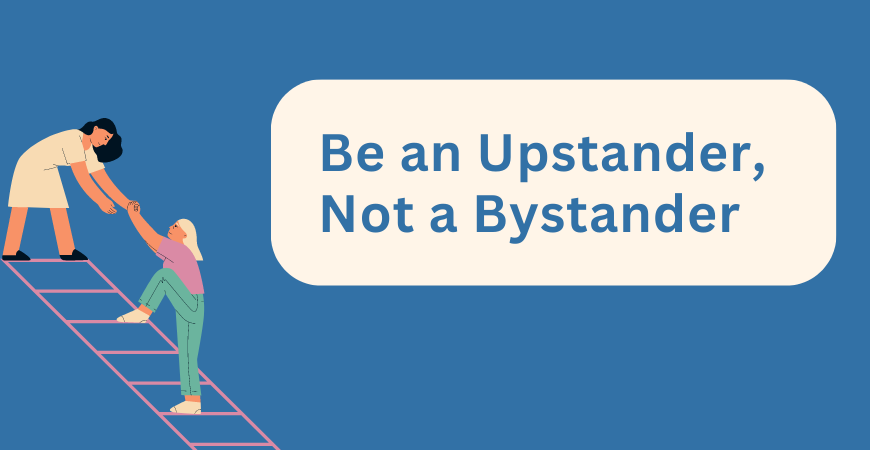Be an upstander, not a bystander

Racism – whether overt or unconscious – is a problem that persists in many workplaces.
According to the 2019 Australian National University’s “Mapping Social Cohesion” survey, which provides insights into social attitudes and experiences of Australians, 15% of respondents reported experiencing discrimination or unfair treatment based on their race or ethnicity in the workplace.
But people can take action to help eliminate it.
One way to do this is by being an upstander instead of a bystander. Upstanders are individuals who intervene when they witness racism or discrimination, while bystanders choose to stay silent or ignore the problem.
What is an upstander?
Upstanders are the people who educate themselves on the impact of racism and discrimination in the workplace. They challenge their own biases and stereotypes and learn how to communicate effectively with individuals from diverse backgrounds. Upstanders understand the importance of listening to and supporting those who have experienced racism and discrimination.
Upstanders also take a more active role in combatting racism and speak up when they witness racist or discriminatory behaviour. This could involve confronting the person who made the offensive comments or actions, reporting the incident to a supervisor or HR department, or supporting the person who was targeted by offering to speak up on their behalf.
Building a culture of upstanders at Bendigo and Adelaide Bank
One organisation that actively promotes the concept of being an upstander is Bendigo and Adelaide Bank
According to Belinda Leon, Employer Brand Specialist at Bendigo and Adelaide Bank, fostering a culture where their people feel supported and enabled to speak up and be an upstander is important to their business values.
“Our ranking as the most trusted bank in Australia, and one of the country’s most trusted brands overall, is something that we’re rightly proud of and didn’t happen without focus, effort, and staying true to our purpose. So, anything that could damage that trust, for employees as well and not just customers or the public, matters to us.”
Belinda says that it’s not always easy for people to speak up so they provide multiple ways for people in their organisation to do so, because ultimately the diversity of experience within their team produces better outcomes for everyone.
“We know that everyone deserves to feel included and valued, and that diversity of experience, mindset, and background inspires our best ideas, helps us challenge the status quo, and identify better ways of working. And in a dynamic operating environment, our diversity will make a difference. Everyone benefits when people feel safe and supported, and able to speak up if and when they need to.”
How can you be an upstander?
When standing up to a racist remark that you hear someone say in the workplace, it is important to respond in a non-aggressive way; the objective should be to promote dialogue rather than an argument.
Here are some tips for doing so:
- Stay calm and composed
Take a deep breath and remain composed when responding to the racist remark. Responding with anger or aggression will only escalate the situation. - Address the behaviour, not the person
Instead of attacking the person making the remark, focus on the specific behaviour or comment that is problematic. Explain why it is inappropriate or offensive. - Ask questions
Ask open-ended questions that encourage the person to reflect on their remark and consider its impact. For example, “Can you help me understand what you meant by that?” - Don’t give up:
If the person becomes defensive or dismissive, don’t give up. Stay calm and reiterate your perspective. Remember that change takes time and persistence.
Related articles
Leave a Reply
Sign up to our newsletter
Get a weekly digest on the latest in Talent Acquisition.
Deliver this goodness to my inbox!


